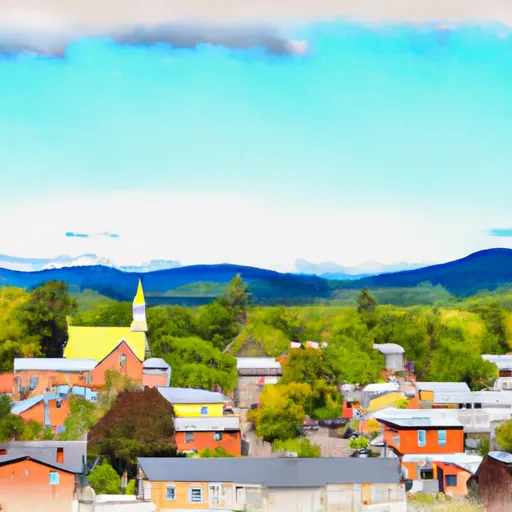-
 Snoflo Premium
Snoflo Premium
Get unlimited access to all our content
With no Ad interruptions! - Start Your Free Trial Login with existing account
Wardsboro
Eden Index
Climate
5.4
•
Recreation
5.4
•
Community
1.0
•
Safeguard
4.3/10

Wardsboro is a small town located in Windham County, Vermont. It has a humid continental climate, characterized by warm summers and cold, snowy winters. The average temperature in summer ranges from 60°F to 80°F, while during winter, it can drop below freezing, with average temperatures ranging from 15°F to 35°F. The town experiences moderate rainfall throughout the year.
Wardsboro is blessed with abundant natural resources, including several water bodies. The West River flows through the town, providing opportunities for fishing, kayaking, and canoeing. Outdoor enthusiasts can also explore the Jamaica State Park, located nearby, which offers hiking trails, camping facilities, and swimming areas.
For those who enjoy winter sports, Wardsboro is close to popular ski resorts such as Mount Snow and Stratton Mountain. These resorts offer skiing, snowboarding, and snowshoeing options. The town itself has access to snowmobiling trails, making it a hub for winter recreational activities.
In conclusion, Wardsboro, Vermont, offers a diverse climate with distinct seasons, plentiful hydrology constituents with the presence of the West River, and a range of outdoor recreation opportunities, particularly for those who enjoy water activities and winter sports.
What is the Eden Index?
The Snoflo Eden Index serves as a comprehensive rating system for regions, evaluating their desirability through a holistic assessment of climate health, outdoor recreation opportunities, and natural disaster risk, acknowledging the profound impact of these factors on livability and well-being.
Climate Health Indicator (CHI): 5.4
Wardsboro receives approximately
1434mm of rain per year,
with humidity levels near 82%
and air temperatures averaging around
6°C.
Wardsboro has a plant hardyness factor of
5, meaning
plants and agriculture in this region thrive during a short period during spring and early summer. Most
plants will die off during the colder winter months.
By considering the ideal temperature range, reliable water supplies, clean air, and stable seasonal rain or snowpacks, the Climate Health Indicator (CHI) underscores the significance of a healthy climate as the foundation for quality living.
A healthy climate is paramount for ensuring a high quality of life and livability in a region, fostering both physical well-being and environmental harmony. This can be characterized by ideal temperatures, reliable access to water supplies, clean air, and consistent seasonal rain or snowpacks.
Weather Forecast
Streamflow Conditions
Upper Connecticut
Area Rivers
Upper Connecticut
Snowpack Depths
Upper Connecticut
Reservoir Storage Capacity
Upper Connecticut
Groundwater Levels
Recreational Opportunity Index (ROI): 5.4
The Recreational Opportunity Index (ROI) recognizes the value of outdoor recreational options, such as parks, hiking trails, camping sites, and fishing spots, while acknowledging that climate plays a pivotal role in ensuring the comfort and consistency of these experiences.
Access to outdoor recreational opportunities, encompassing activities such as parks, hiking, camping, and fishing, is crucial for overall well-being, and the climate plays a pivotal role in enabling and enhancing these experiences, ensuring that individuals can engage in nature-based activities comfortably and consistently.
Camping Areas
| Campground | Campsites | Reservations | Toilets | Showers | Elevation |
|---|---|---|---|---|---|
| Winhall Brook | 110 | 1,071 ft | |||
| Molly Stark State Park | 35 | 1,968 ft | |||
| Grout Pond | None | 2,303 ft | |||
| Townshend State Park | 35 | 586 ft | |||
| DAR State Forest | 50 | 1,456 ft | |||
| Jamaica State Park | None | 873 ft | |||
| Windsor State Forest | 24 | 1,845 ft | |||
| Red Mill Brook | 31 | 2,178 ft | |||
| Mohawk Trail State Forest | 56 | 762 ft | |||
| Hapgood Pond | 28 | 1,548 ft |
Nearby Fishing
Nearby Ski Areas
Catastrophe Safeguard Index (CSI):
The Catastrophe Safeguard Index (CSI) recognizes that natural disaster risk, encompassing floods, fires, hurricanes, and tornadoes, can drastically affect safety and the overall appeal of an area.
The level of natural disaster risk in a region significantly affects safety and the overall livability, with climate change amplifying these risks by potentially increasing the frequency and intensity of events like floods, fires, hurricanes, and tornadoes, thereby posing substantial challenges to community resilience and well-being.
Community Resilience Indicator (CRI): 1.0
The Community Resilience Indicator (CRI) recognizes that education, healthcare, and socioeconomics are crucial to the well-being of a region. The CRI acknowledges the profound impact of these elements on residents' overall quality of life. By evaluating educational resources, healthcare accessibility, and economic inclusivity, the index captures the essential aspects that contribute to a thriving community, fostering resident satisfaction, equity, and social cohesion.

